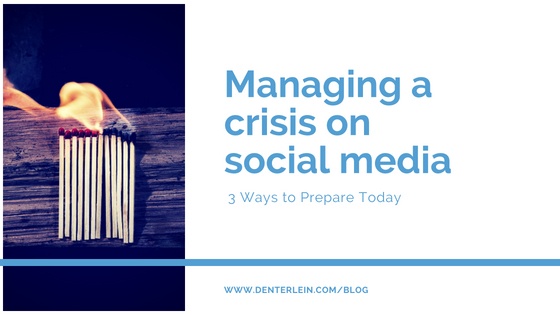It goes like this …
Something bad happens, which someone captures on their phone and then posts a video or picture on Twitter, tagging a high-profile person or organization … let the viral backlash begin!
It seems no industry or organization is safe today when it comes to the repercussions of public outcry, and recent events such as Facebook’s privacy debacle and Starbuck’s incident in Philadelphia have shown how quickly things can escalate on social media.
So, is your organization ready for such an event?
Here are three steps you can take right now to prepare for and better manage a crisis on social media.
Assess Your Social Footprint
When is the last time you truly looked at your company’s or its executive’s social footprints? It seems like a simple question, but the larger the following and more active the audience, the more regularly an audit should be conducted.
A social footprint includes all tweets, posts, comments, relevant #hashtags, videos, blogs, pictures, etc.—basically anything and everything that has been published by or about a person or company.
Assessing your social footprint helps you understand the true reach of your channels and network and the relevant conversations surrounding them. An audit can also help you identify any gaps in your crisis response strategy, be it the most effective and engaging content types to add to your arsenal or individuals/organizations you may need to monitor more closely.
Develop Social Media Guidelines
On the surface, social media guidelines range from who drafts and then reviews/approves your social media posts to preferred publishing times. On a deeper level, social media guidelines are there to make sure that your published content isn’t misconstrued as offensive or insensitive.
If we learned anything from the #MeToo movement, it’s s how quickly people can judge public statements and opinions. It’s critical to put content guidelines in place for your organization and key executives to ensure their published social content stays on message and aligns with your brand’s standards before, during, and after a crisis.
Here is a great example from the Sprout Social blog.
Review Your Policies
The worst time to review your policies is when it’s too late. The best time to review your policies is right now!
Does your organization have standards by which you evaluate controversial content posted by users to your Facebook, and have these standards been approved by leadership? Once approved, these policies should be posted on all public social profiles as a type of Community Standard.
Proactively stating your Facebook or LinkedIn page does not allow negative posts or inappropriate language will help block online “trolls” or a potential onslaught of negative messages without a company appearing defensive.
Additionally, employees need to understand how the company expects them to portray themselves online as representatives of your organization. You can’t prohibit employees from speaking freely on their own social channels, but you can let them know the ramifications of inappropriate online conduct.
Best Buy's Social Media Policy is a good example of a company with reasonable, but stringent, community standards for their social channels.
Are you Crisis Ready? Download our eBook to find out.
Learn more about Denterlein's digital and social capabilities.
By Alex Boonstra

